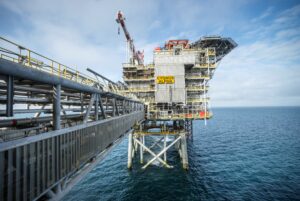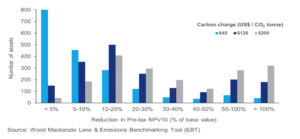Environment, Social and Governance

Neptune, EDF collaborate to seek reliable approach for measuring methane emissions from offshore facilities
Neptune Energy and the Environmental Defense Fund (EDF) have announced a collaboration to test a new approach for measuring methane emissions from offshore oil and gas facilities.
EDF will coordinate a team of international researchers that includes Scientific Aviation, a provider of airborne emissions sensing, and Texo DSI, a UK-based drone platform provider. The goal will be to evaluate advanced methods for quantifying facility-level offshore methane emissions, identify key sources and prioritize mitigation actions.
Drone, aircraft and methane sensing technologies will be deployed on the Neptune-operated Cygnus platform in the Southern UK North Sea to provide a close-up view of operations typical of a North Sea offshore facility, such as gas separation, drying and compression technology, and flaring and venting. Global investment firm The Carlyle Group, a shareholder in Neptune Energy, is supporting and observing the project to help drive research learnings and improved standards.
Last October, the European Commission introduced a strategy that calls for oil and gas methane regulation in the EU and gives consideration to a performance standard for gas used or sold in the EU.
A key objective for the Neptune project is to establish a reliable benchmark for assessing total oil and gas methane emissions in an offshore environment. Studies show that official inventories can often underestimate overall emissions because reports are based on desktop calculations versus empirical data.
The study is due to commence in July this year, with initial results expected in October.
BP details new goals, 2020 progress in sustainability report
In its latest Sustainability Report, released on 26 March, BP introduced new goals aimed at addressing a variety of societal issues linked to the low-carbon future.
Among these goals are an exploration of new ways to make clean energy accessible. BP will aim to develop 50 GW of renewable generating capacity by 2030, which it says will be enough to meet the power needs of 36 million people. It also aims to help at least 1 million people build sustainable livelihoods.
Biodiveristy was also an area of focus in the report. Starting in 2022, BP said, it will require all new projects to have plans in place aiming to achieve net positive impact, with a target to deliver 90% of actions within five years of project approval. The company aims to enhance biodiversity at its major operating sites and support biodiversity restoration and sustainable use of natural resource projects in the countries where it has current or growing investments.
The report also outlined the progress BP made in 2020 toward becoming a net-zero company. It reduced operational greenhouse gas emissions by 16% and moved into the offshore wind market through a strategic partnership with Equinor.
API Outlines low-carbon policy in new climate change action framework
API has released a new policy framework of industry and government actions to address the risks of climate change while meeting the world’s long-term energy needs. The framework aims to build on the progress the US has made in driving emissions to generational lows.
API and its members support climate actions in the following five areas:
• Accelerating technology and innovation to reduce emissions while meeting growing energy needs, including the fast-tracking of commercial deployment of carbon capture, utilization and storage;
• Further mitigating emissions from operations to accelerate environmental progress, including direct regulation of methane from new and existing sources;
• Endorsing a carbon price policy to drive economy-wide, market-based solutions;
• Advancing cleaner fuels to provide lower-carbon choices for consumers; and
• Driving climate reporting to provide consistency and transparency, including developing a template of core greenhouse gas emissions indicators.
Baker Hughes signs MOU to contribute to Polaris carbon storage project
Baker Hughes and Horizont Energi, a Norwegian carbon tech startup, have signed a memorandum of understanding (MOU) for the Polaris carbon storage project in the Barents Sea. The two companies will explore the development and integration of technologies to minimize the carbon footprint, cost and delivery time of carbon capture, transport and storage (CCTS). The project is expected to have a total carbon storage capacity in excess of 100 million tons.
Baker Hughes and Horizont Energi will also work together to develop processes and technologies across the carbon capture value chain. This includes the reduction of carbon footprint in the well construction and subsea segments, and developing a life-of-field service model for the life cycle of carbon storage projects, including site selection, drilling and power to subsea infrastructure.
WoodMac analysis shows how carbon pricing plans could impact upstream economics

At present, few countries require producers to either pay a carbon tax or participate in an emissions trading scheme (ETS). But Wood Mackenzie says that could soon change as governments seek to meet decarbonization targets. Carbon charges are likely to come, and they will transform the upstream sector, affecting both asset values and the industry’s economics.
More than 60 carbon charge regimes currently exist at international, national and subnational levels. North America’s first carbon tax for large oil and gas producers was established by the Canadian province of Alberta in 2007. British Columbia implemented a similar tax in 2008, with the Canadian federal government introducing a levy in 2019. Last year, the Canadian government announced its carbon tax rate would rise to the equivalent of around US$135 per tonne by 2030.
Meanwhile, the Norwegian government’s proposal to almost triple its overall carbon tax rate on upstream oil and gas operations makes a bold statement, considering that E&Ps operating on the Norwegian Continental Shelf already pay the highest carbon taxes in the world.
Kyrah McKenzie, from WoodMac’s upstream research team, said: “The proposals would see the combined Norway CO2 tax and EU ETS price reach $262 per tonne by 2030 – nearly a three-fold increase compared with today’s price.
“The changes will increase carbon taxes to almost $2 billion per annum by 2030 and would make up around $2 per barrel of OPEX, similar to transportation tariffs. This could increase up to US$10 per barrel of oil equivalent at more mature fields.”
However, Ms McKenzie said that Norway’s high tax rates, against which carbon taxes are deductible, would help offset the rise.
She added: “The implications for asset and company value are minimal. We believe asset valuations would fall by about 1% ($1.4 billion), though company value could fall by up to 5% for those with more mature, high-carbon portfolios.”
Graham Kellas, Senior VP, Global Fiscal Research for WoodMac, said producers have been including carbon pricing assumptions – usually between $40 and $100 per tonne – in their financial models for some time.
His analysis indicates that at $40 per tonne, most asset values are relatively insensitive to the carbon charge, although even that rate could wipe out the remaining value of some assets. But at $200 per tonne – a lower rate than what Norway is proposing for 2030 – a third of all assets would have at least 50% of their remaining value transferred in carbon charges.
Equinor-backed projects secure UK government funding
The UK government has announced funding awards under the Industrial Strategy Challenge Fund for three project consortia in which Equinor is directly involved.
The first consortium, Zero Carbon Humber (ZCH), aims to turn the UK’s largest industrial cluster net zero through the deployment of low-carbon hydrogen, carbon capture, and negative emissions being delivered across the Humber estuary. Its first project will be the Equinor-led H2H Saltend low-carbon hydrogen facility and a hydrogen and CO2 pipeline network across Humber industrial sites developed by National Grid Ventures.
The second consortium is Net Zero Teesside (NZT), which aims to decarbonize the Teesside industrial cluster with carbon capture and build a gas-fired power station with carbon capture technology.
The third is Northern Endurance Partnership, a partnership with Eni, National Grid, Shell, Total and BP. It will develop offshore CO2 transport and storage infrastructure in the UK North Sea that will serve both ZCH and NZT.
The three successful bids amount to £229 million in private and public funding, with Equinor and its partners contributing more than two-thirds of the total. The funding will be used in each project to move through the detailed engineering and design stages and progress to the point where, subject to the development in parallel of supportive UK policy, a final investment decision on each can be taken.
Equinor and its partners will now progress these projects with the aim to create the world’s first net-zero industrial cluster by 2040.
Shell Outlines goals in NEW sustainability report
Shell has published its 2020 Sustainability Report, outlining the company’s strategy to become a net-zero emissions energy business by 2050.
In the report, Shell said it expects total oil production to decline by 1-2% annually until 2030. By 2025, it expects to have kept the methane emissions intensity of Shell-operated assets to below 0.2%, and by 2030 the company will end routine flaring of gas from its assets.
The report also outlined a commitment to biodiversity and water scarcity. Shell said it will implement “nature-based” solutions to protect, restore or transform land starting this year. The company will also aim for a 15% reduction in freshwater consumption from its facilities by 2025.




